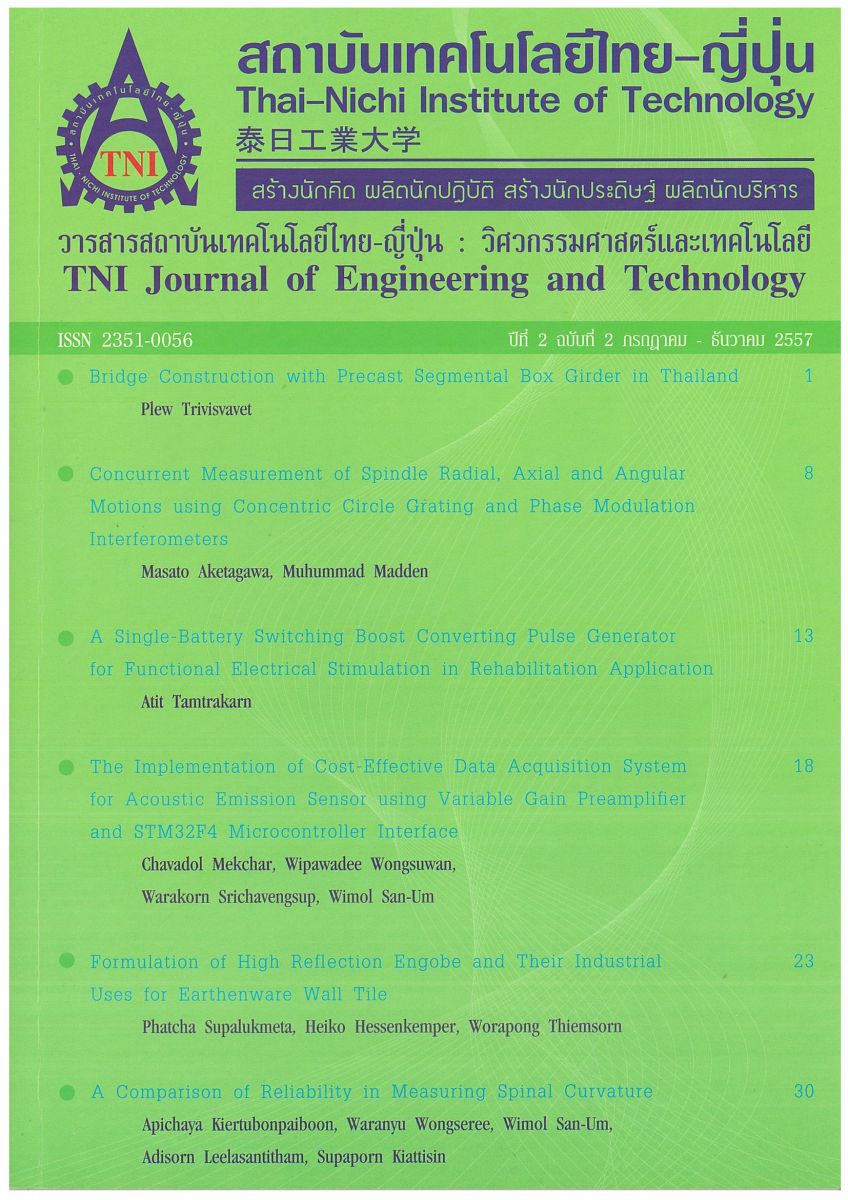Rehabilitation, preventive care and universal design: the electronic musical instrument shoe
Main Article Content
Abstract
We developed a new electronic musical instrument shoe, the Otokutsu, which is a shoe to play music with the foot. We used universal design to develop it that makes sounds and flashes. Everyone can easily play it and enjoy the fun. We developed a special score for it that can be effortlessly played, even by beginners or those who cannot read music. Furthermore, we developed the optical navigation system. It enables enjoyable rehabilitation exercises for the foot. We evaluated it with a number of day-care managers in senior programs; the instrument is effective for rehabilitation exercises and elementary schools. Enabling regaining a sense of the foot after fixation of the foot is effective rehabilitation. Compared with selfresistance training with a towel or tube, rehabilitation with it can be continued for a long time. It can also reduce the possibility of injury for the physically unimpaired because using the instrument strengthens foot muscles and improves flexibility. Wearers can adjust the position and strength of the switch in accordance with rehabilitation, or preventive care, and degree of difficulty. Awareness of the results enables us to improve and motivates us to continue exercising for rehabilitation or preventive care. It enables continuing rehabilitation or preventive care, while making the exercising enjoyable.
Article Details
Article Accepting Policy
The editorial board of Thai-Nichi Institute of Technology is pleased to receive articles from lecturers and experts in the fields of engineering and technology written in Thai or English. The academic work submitted for publication must not be published in any other publication before and must not be under consideration of other journal submissions. Therefore, those interested in participating in the dissemination of work and knowledge can submit their article to the editorial board for further submission to the screening committee to consider publishing in the journal. The articles that can be published include solely research articles. Interested persons can prepare their articles by reviewing recommendations for article authors.
Copyright infringement is solely the responsibility of the author(s) of the article. Articles that have been published must be screened and reviewed for quality from qualified experts approved by the editorial board.
The text that appears within each article published in this research journal is a personal opinion of each author, nothing related to Thai-Nichi Institute of Technology, and other faculty members in the institution in any way. Responsibilities and accuracy for the content of each article are owned by each author. If there is any mistake, each author will be responsible for his/her own article(s).
The editorial board reserves the right not to bring any content, views or comments of articles in the Journal of Thai-Nichi Institute of Technology to publish before receiving permission from the authorized author(s) in writing. The published work is the copyright of the Journal of Thai-Nichi Institute of Technology.
References
Stefan Hesse, “A mechanized gait trainer for restoration of gait,” Journal of Rehabilitation Research and Development, Vol. 37, No. 6, 2000.
Mace, R., “Universal design, Barrier free environments for everyone,” Designers West 1985, 33, pp.147-152, 1985.
Frontera, W,R., Meredith, C.N., O’reilly, H.G. and Evans W.J., “Strength conditioning in older men: skeletal muscle hypertrophy and improved function,” Journal of Applied Physiology, 64, pp.1038-1044, 1988.


